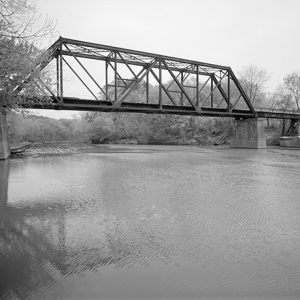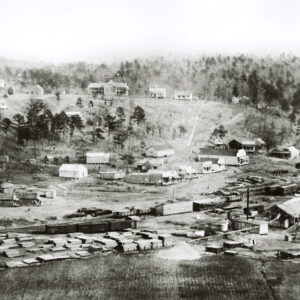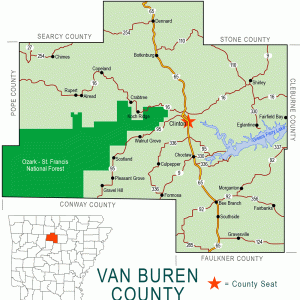calsfoundation@cals.org
Shirley (Van Buren County)
| Latitude and Longitude: | 35°39’22″N 092°19’10″W |
| Elevation: | 551 feet |
| Area: | 2.41 square miles (2020 Census) |
| Population: | 248 (2020 Census) |
| Incorporation Date: | November 18, 1911 |
Historical Population as per the U.S. Census:
|
1810 |
1820 |
1830 |
1840 |
1850 |
1860 |
1870 |
1880 |
1890 |
1900 |
|
– |
– |
– |
– |
– |
– |
– |
– |
– |
– |
|
1910 |
1920 |
1930 |
1940 |
1950 |
1960 |
1970 |
1980 |
1990 |
2000 |
|
– |
349 |
292 |
365 |
259 |
197 |
269 |
354 |
363 |
337 |
|
2010 |
2020 |
|
|
|
|
|
|
|
|
|
291 |
248 |
|
|
|
|
|
|
|
|
The town of Shirley rests on the Middle Fork of the Little Red River in northeastern Van Buren County. Established by the railroad, the town has become an agricultural center for the region with a focus also on recreation and tourism.
The rocky and wooded hills of the Ozarks have been sparsely populated for most of recorded history. When the land that would become Arkansas was acquired by the United States in the Louisiana Purchase, Osage hunters and fishers were the primary visitors to the land that would become Shirley. Changing treaties first recognized the Osage as owners of the land, later gave it to the Cherokee, and ultimately removed both the Osage and the Cherokee west to what is now the state of Oklahoma.
John G. Nixon and Elijah M. Sowell both acquired land at the future site of Shirley in 1859. Neither name appears on official rosters of Union or Confederate soldiers from the Civil War. In general, loyalties were divided in Van Buren County regarding the war.
Following the war, life remained quiet in the area until the first decade of the twentieth century. A railroad linking Joplin, Missouri, to Helena (Phillips County) was built across northern Arkansas, and as part of that railroad, a bridge was built across the Little Red River in Van Buren County in 1907 and 1908. The Missouri and North Arkansas Railroad (M&NA) established a depot near the bridge, and a community rapidly formed around the depot. A post office was opened in 1909, and the town incorporated in 1911. The name Shirley might have come from a railroad worker in the area.
The town grew rapidly, thriving on the lumber industry now made possible by rail transportation. Between ten and fifteen sawmills were built in the surrounding area, and a large finishing mill was built in Shirley. Cotton and cattle were also raised in the area. The town had three hotels and a Baptist church; by the 1920s, it also had a school, a jail, about a dozen stores, three barbershops, two blacksmiths, an ice plant, a stave mill, four doctors, and a bank. The local newspaper at that time was called the Shirley Advocate.
The timber industry declined after a time, but a furniture factory continued to operate in Shirley for many years. In 1949, a strike against the railroad, combined with flood damage to the tracks, closed the line through Shirley. The depot remained until 1964, when it was dismantled. School consolidation increased the size of the Shirley School District, which in 2013 served more than 400 students. Twenty-first-century businesses in Shirley include four stores, a café, a bank, a barber, two hair salons, three auto shops, a car wash, an insurance firm, a trucking firm, a construction firm, and an aircraft maintenance firm. For several years, shiitake mushrooms were grown at a facility in Shirley. The town also has seven churches.
Because it is near Greers Ferry Lake, Shirley also boasts of many recreational opportunities, including hiking, fishing, canoeing, golfing, and horseback riding. The first weekend in June, Shirley is home to a rodeo sponsored by the Red River Saddle Club. In 2011, the Shirley Centennial Museum opened, featuring historical publications, newspaper accounts, family histories, books, photos, and quilts.
For additional information:
Cole, Nancy. “Few Take on Mushroom Challenge.” Arkansas Democrat-Gazette, November 26, 2006, pp. 1G, 4G.
Maxwell, Ronnie. “The Bridge Over the Little Red.” Arkansas Gazette, April 16, 1972, p. 4E.
Shirley, Arkansas. http://www.shirleyarkansas.org/ (accessed August 6, 2022).
Shirley High School Service Learning Students. Shirley, Arkansas: An Oral History. Little Rock: Arkansas Graphics, 2006.
Steven Teske
Butler Center for Arkansas Studies
 Shirley Bridge
Shirley Bridge  Shirley Depot
Shirley Depot  Shirley Overview
Shirley Overview  Van Buren County Map
Van Buren County Map 




The name Shirley comes from the last name of a man who worked for the railroad that came through that location. See the history by Glen Hackett, who was my principal back in the early 1960s. This history is an MA thesis located in the reserve section of the UCA library in Conway. Mr. Hackett interviewed the old people back in the early ’50s who were around then.